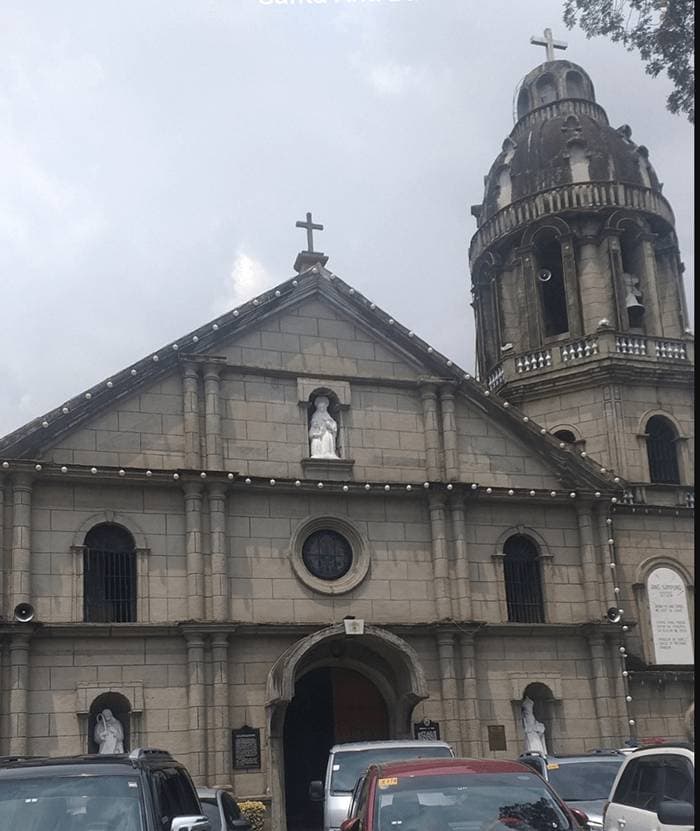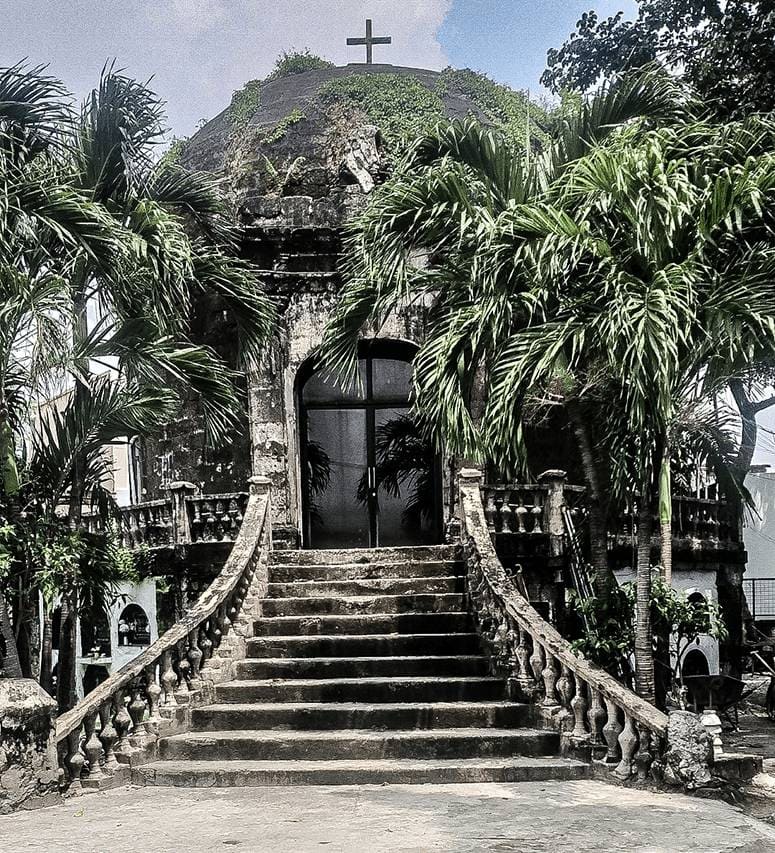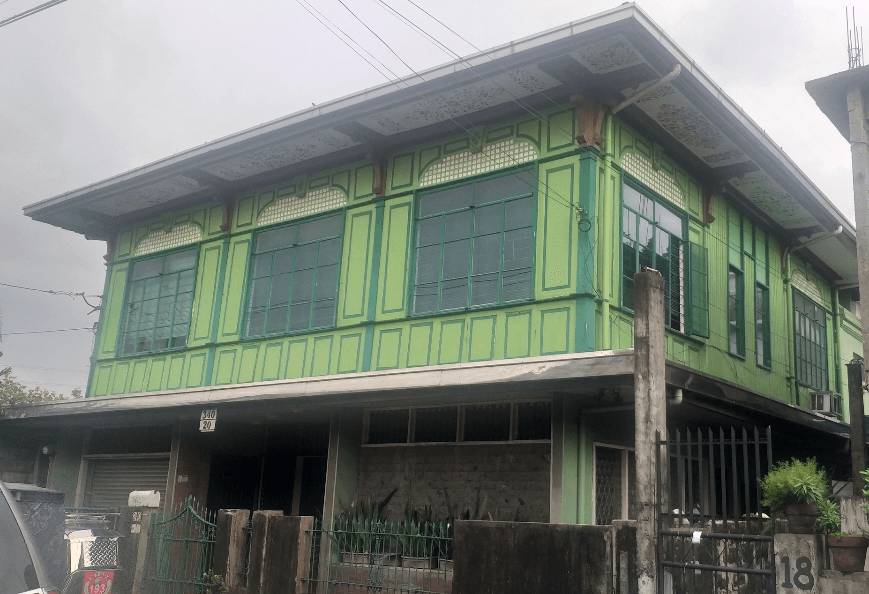If you search online for Taguig’s top sights, all places would be located in Bgy. Fort Bonifacio such as American Cemetery, Mind Museum, and Bonifacio High Street. Taguig has grown richer when former military reservations were converted by the Bases Conversion and Development Authority (BCDA) into mixed-use developments. Originally a fishing village and named after rice-thresher (taga-giik), it is now a first class highly urbanized city. Recently, it has grown bigger with the addition of the “”Embo” barangays which used to be part of Makati.
Richer and bigger, the larger part of Taguig remains provincial. That is why Mayor Lani Cayetano in 2011 called Taguig “Probinsiyudad.” It’s like a province within a city just like Poblacion in Makati. Unlike Poblacion, the old quarter of Taguig does not have hip bars and restaurants.
Santa Ana Basilica
What it has, however, is an old church founded way back in 1587 by the church builder Augustinians. Last year, the Archdiocesan Shrine of Santa Ana was declared the 20th Minor Basilica of the Philippines, the first within the Diocese of Pasay. St. Anne, the mother of Mama Mary, has always been the patroness of Sta. Ana. Looking closely at the altar, we were told by Jimmy C. Uy, official researcher for the Minor Basilica, that the image of St. Anne is the oldest in the country. This image with the young Mama Mary has been attributed with many miracles. The image in Taguig is different from other St. Anne images in that Niña Maria is holding a closed book and holding the hands of her mother. With St. Joseph on the left side of the altar and St Joachim, husband of St. Anne, on the right, the Holy Family is complete with the maternal grandparents of Jesus. Found only in basilicas are the umbracullum (umbrella) and tintinnabulum (clinking bell) which are part of the papal regalia. There is also a papal seat reserved for the Pope.

Fluvial Parade
During the feast day of St. Anne on July 26, a fluvial parade called Pagoda sa Ilog is held in the afternoon from Taguig River to Laguna de Bay. One of the traditions is for the fishermen to throw their harvest such as santol, ponkan, and chocolate to the crowd. Another tradition is the “Pasubo” which is an exchange of traditional food. Instead of the original image, the “callejeras”, a duplicate is used. This identical image is old itself, being built in 1901.

On the left side, outside the altar is a bone relic of St. Anne which was given by tha Augustinians of Cebu. The devotion to this bone relic is on Tuesday. In preparation for the first anniversary of the declaration as basilica, the church ceilings were painted on featuring the Luminous Mysteries. Notable Pateros artists Bong Quiogue and Lawrence Castillo were among those who painted. Outside the basilica in Bgy. Tuktukan is the Taguig Catholic Church where you will find the Simborio. This is a dome-shaped structure made of stone with a small cross at the top built by the Augustinians in the 1700s. Many people believe there is a tunnel linking Simborio and the Santa Ana Basilica but this has not been dug up.
Across Santa Ana Basilica is Plaza Quezon. The story goes that President Quezon visited Taguig and stayed one night at the Yamzon house, a prominent ancestral house in the barangay. To commemorate his stay, a monument was built in his honor. This is reputedly the first Quezon monument built even though the Commonwealth President was very much alive.

Four Religions
A jeepney ride away is Ligid- Tipas. This barangay is known for different religious denominations which are a few meters away from each other. Two churches, in fact, are adjacent to each other. The Iglesia Filipina Independiente, commonly called Aglipayan Church, is right beside St. John the Baptist Catholic Church, commonly called the “Dambana ng Kawayan” (Bamboo Shrine). The Dambana’s altar, wall sidings, ceilings and benches are made of bamboo. On the same street is Plaza Bonifacio to remind the participation of the Taguigeños in the Philippine Revolution. Andres Bonifacio frequented Taguig, the birthplace of his father, Santiago. In a perpendicular street named after Felix Manalo, founder of INC (Iglesia ni Cristo), one will find the second oldest Iglesia ni Cristo place of worship. Felix Manalo himself was born in Barangay Calzada, Taguig. At the end of F. Manalo is Tipas Unida Church.
Tipas Hopia
A few minutes walk is Barangay Ibayo-Tipas known for hopia. This was started by Belen Flores in 1988. She wanted to prove that Filipinos can make hopia at par or even better than the Chinese. It is now run by one of her daughters, Alicia Flores-Sta. Ana. The first hopia was monggo (mung beans). Inspired by the customers, other flavors were added. The hopia had flaky crust with simple bean fillings. The classic hopia included ube, pandan, baboy, piña, and mini assorted.

For those with sweet tooth, pastillas hopia are plain, choco, ube, and banana split. Special hopia are yema and Choc-nut. The latest are De Krema and Ube de Krema. Hopia means “good pastry” in Hokkien. The best way to end a trip is with good food and shopping. At Taguig, where the old meets the new in Probinsiyudad, life is good. It’s a good life!
* * *
Thank you Jimmy C. Uy (Official Researcher for the Minor Basilica of Santa Ana) and the Santa Ana Parish Office for the assistance.
Some photos by Glenn Biasca
* * *
JP Ordoña (Manilakad) leads Manilakad Walks in Intramuros, Binondo, Quiapo and more. Let him guide you to several walking destinations in Manila. Manilakad (JP Ordoña) can be reached on Facebook Messenger or through text at 0916-3597888.
